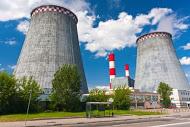
What's the most common risk to Asia's nuke projects?
It's not about capacity.
What has been touted as the most common risk to nuclear power projects, which have been described as having complexities, long construction periods, and a wide range of equipment from various suppliers?
According to a research note from Barclays, project delays are the most common risk to nuclear power projects. For instance, a one- year delay is common for GII projects in China, which is still better than delays in Europe of 5-8 years.
A one-year delay increases capex by around 10%, said Barclays. Further, although newer generations of NPPs have safety features that are much better than previous generations, the risk of accidents cannot be ruled out.
Decommissioning costs at the end of the life of the plant are also significant, although the first nuclear reactors in China are not up for decommissioning until 2035 and the NPPs have made provisions equivalent to 10% of the initial investment, discounted back to present value.
Here's more from Barclays:
Project delays are common in nuclear power projects due to their complexities, long construction periods, and the wide range of equipment from various suppliers.
According to World Nuclear Industry Status Report (2014), 49 of the 66 nuclear reactors under construction globally are running behind schedule. The report also estimates that all the 27 reactors under construction in China are in various degrees of delays.
We believe that project delay risks are higher for Gen III reactors such as Haiyang and Sanmen with their AP1000 reactors, Taishan with its EPR reactor, and Tianwan with a VVER reactor.
The total capacity of Gen III reactors under construction is 10.7GW, which is 36% of the 29GW under construction. The remaining projects are CPR1000, which is Gen II technology and one that China has 15 years of experience with.
We estimate that Gen III projects will be delayed by at least 30 months in China, while Gen II project delays are much lower, by less than a year due to China’s experience and familiarity.























 Advertise
Advertise








